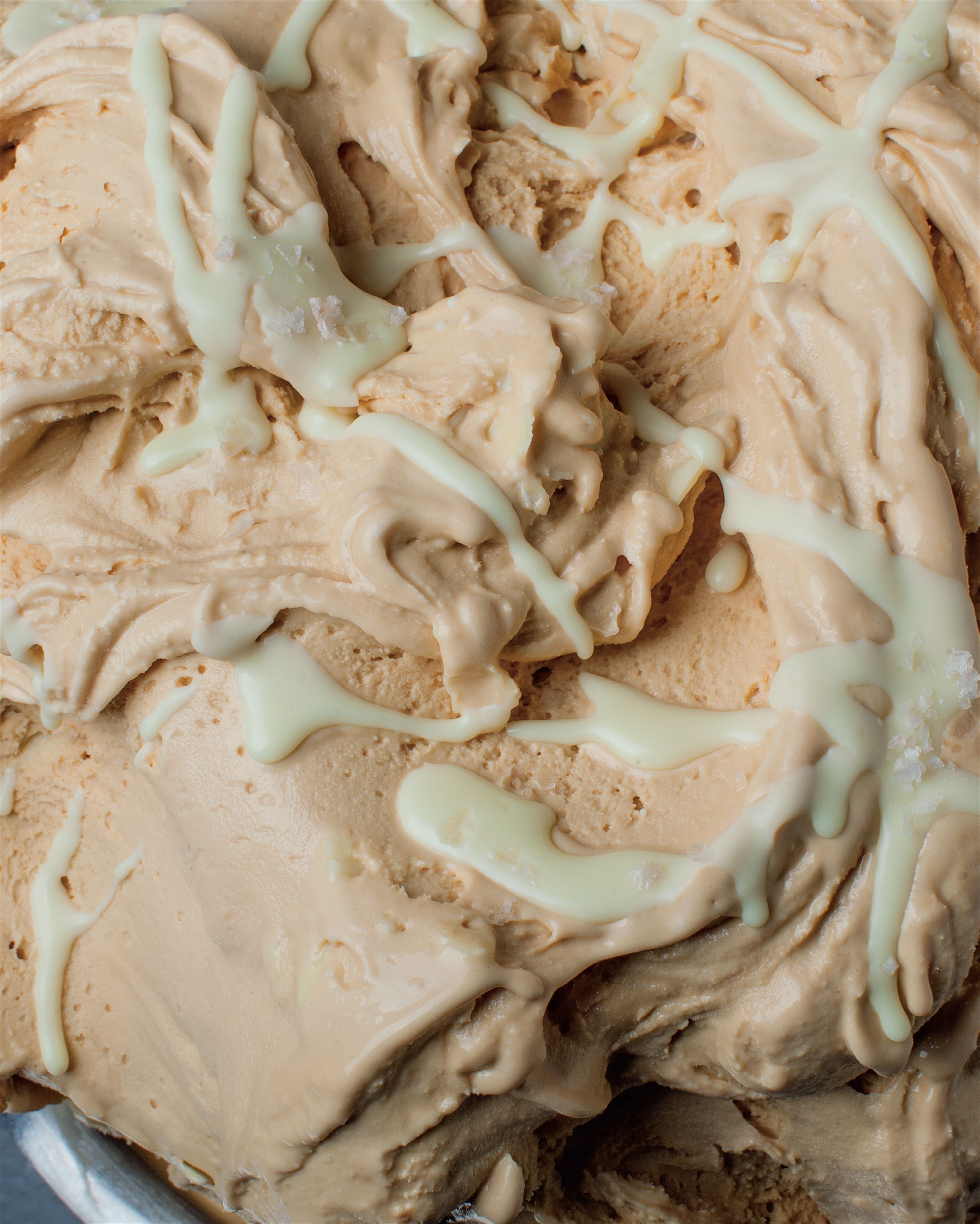Salted caramel gelato recipe from Gelato Messina by Nick Palumbo | Cooked
Your folders
Your folders
Servings: 1
Author : Nick Palumbo

Ingredients
Export 1 ingredients for grocery delivery
Instructions
Step 1
MixingPut the milk and cream in a double boiler over a medium heat. Put the sugar in a heavy-based saucepan and stir in 30 g water to make a slurry. Put the pan on the stove over a medium–high heat and let the sugar caramelise. There’s no need to stir, just let it do its thing. The sugar will start to bubble after 5 minutes or so and then 2 or 3 minutes later it will start to colour. When the caramel is a dark toffee brown, remove the pan from the stove — the sugar will be around 160°C to 180°C. Meanwhile, put the remaining powders in a bowl and mix until combined. When the milk and cream hit 40°C, whisk in the powders and bring the mixture up to 65°C. Keep the mixture at 65°C for 30 minutes, whisking every 5 minutes. When the caramel is ready, slowly, slowly pour the caramel into your hot milk mixture. Make sure that the mixture in your double boiler is above 65°C, as the hotter the mixture, the less the temperature differential between the mix and the caramel, reducing the chance of getting splashed with hot caramel. Under no circumstances should you combine the caramel with cold mixture. You can add the caramel at any time while your mixture is sitting at above 65°C for the required 30 minutes. When you have added all the caramel, give it a good mix with a stick blender. Transfer the mixture to a stainless steel bowl and place in an ice bath; chill to 40°C. Cover tightly with foil and put in the freezer, stirring every 10 minutes or so until the mixture drops to 4°C then place in the fridge and let it age for 4 hours. ChurningTurn on your gelato maker so it begins the freezing process. Using a stick blender, blend the mixture for 1 minute, then pour into the gelato maker. Once the mixture reaches –4°C, scoop out the gelato and transfer to a pre-cooled stainless steel bowl, cover tightly and immediately place in the freezer. ServingThe gelato should be served within 2 to 3 hours after placing it in the freezer, or when it reaches –12°C. If it goes below –15°C or is left in the freezer overnight, the texture will be compromised.
Step 2
MixingPut the milk and cream in a pasteuriser and select high pasteurisation. Put the sugar in a heavy-based saucepan and stir in 30 g water to make a slurry. Put the pan on the stove over a medium–high heat and let the sugar caramelise. There’s no need to stir, just let it do its thing. The sugar will start to bubble after 5 minutes or so and then 2 or 3 minutes later it will start to colour. When the caramel is a dark toffee brown, remove the pan from the stove — the sugar will be around 160°C to 180°C. Meanwhile, put the remaining powders in a bowl and dry mix. When the milk and cream hit 40°C, whisk in the powders. When the caramel is ready, slowly, SLOWLY pour the caramel into your pasteuriser. Make sure the pasteuriser is above 65°C, as the hotter the mixture, the less the temperature differential between the mix and the caramel, reducing the chance of getting splashed with hot caramel. Under no circumstances should you combine the caramel with cold mixture. Once the pasteuriser runs its cycle and gets down to 4°C, let the mixture age for 4 hours at 4°C. ChurningMeasure an appropriate amount of mixture into a measuring jug and put in a batch freezer. Within 10 to 12 minutes, your mixture should be ready for extraction. For long-term storage, up to 2 weeks: Put the gelato in a blast freezer for 30 minutes, then store at –18°C. For short-term storage, 2 to 3 days: Put the gelato in a storage freezer at –18°C. ServingThe serving temperature of the gelato should be around –11°C to –13°C.